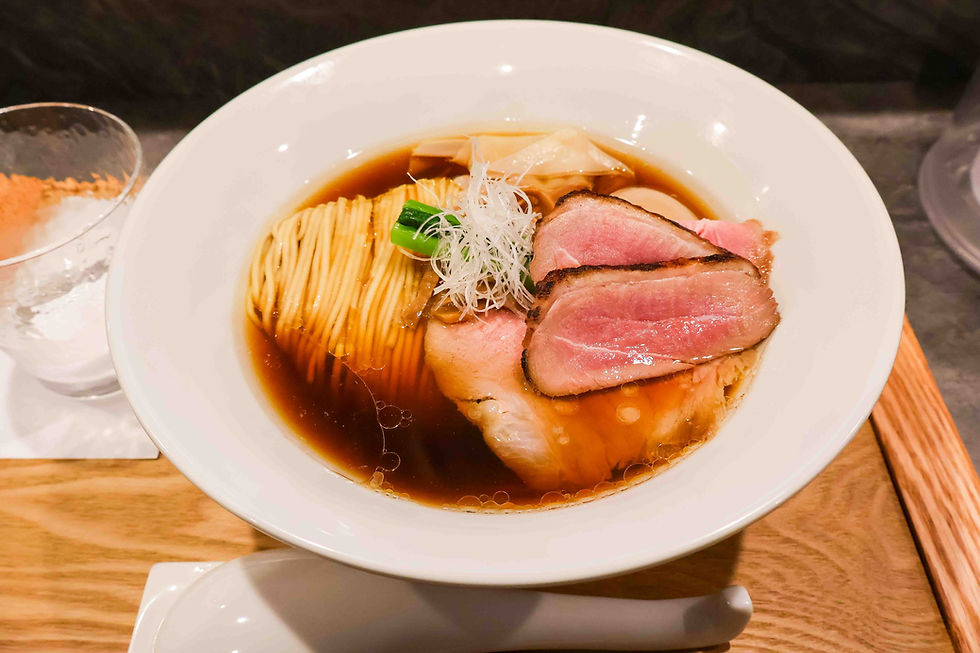Fuunji Ramen and Tsukemen - Worth the Hype?
- Frank
- Oct 3, 2019
- 3 min read
Updated: Jun 4
Shinjuku ramen shop Fuunji (風雲児) is famous for its rich tsukemen. With ramen rock star status, they’re popular with locals and tourists alike. But is Fuunji worth the hype and wait? Here’s my take!
Fuunji – Some Background
After opening in 2007, it was clear that Fuunji was special. Its story is intriguing. Coming from an Italian cuisine background, owner Miyake-san never had any formal ramen training.

While ramen is on the menu, they’re best known for their savory tsukemen (dipping ramen). Furthermore, they were instrumental in helping usher in the era of modern tsukemen. What’s the big deal about their modern tsukemen? Let’s dive in!
Order the Tsukemen
I mentioned “modern tsukemen”. This tsukemen is the thicker, richer soup style that’s most common today. Fuunji’s tsukemen soup is chicken bones, iwashi (sardines) from the Seto Inland Sea, katsuobushi (bonito fish flakes) from Kouchi, and konbu (kelp).

It’s an 8 hour boil, then 6 hours of filtering, and then a whole day of letting it all mature and get better acquainted. Labor intensive, to say the least.

The soup is salty, sweet, and chicken thick creamy all at once. In addition, is isn’t as fishy tasting as many other modern tsukemen soups. In this sense, it’s a great introduction to this ramen genre!
The Ramen is Quality Too
The tsukemen should be first on your list. But don’t immediately dismiss their ramen. In it, they use the same straight, medium-thick noodles. They’re from high-quality, local wheat.

The ramen broth isn’t as thick as the tsukemen broth. There’s also less of the fish flavor (there’s no fish powder in the ramen). Finally, the ramen comes with green negi (scallions) and they help pierce through the richness.
Any Negative Points?
Being in Shinjuku, Fuunji naturally gets a lot of tourists. This isn’t a bad thing of course, and Fuunji still gets plenty of locals. It just depends on what you’re looking for. If you’re seeking a less touristy spot, there are other Tokyo tsukemen shops for you.

At other Tokyo tsukemen restaurants you can also get more bang for your buck. With the all toppings inclusive “specials”, Fuunji could be more generous. But renting in Shinjuku isn’t cheap. Furthermore, their tsukemen and ramen is still a bargain vs what you pay outside of Japan.
So – Worth the Hype?
It’s true that various Tokyo tsukemen restaurants have surpassed Fuunji in terms of ranking. But you can’t deny Fuunji’s influence on many on them and Fuunji’s pivotal role in Japan ramen history.
Fuunji serves incredible tsukemen and ramen. For this reason alone, they’re worth a visit. Fuunji and Rokurinsha are often the Tokyo 2 tsukemen restaurants tourists go to. So again, do except to see more tourists.

But even though Fuunji gets crowded, an efficient system makes sure the line moves quickly. Once you’re inside, make your selection from the ticket machine and line up against the wall. At one point, the staff will ask what amount of noodles you want (regular or large). Easy.

One fun part about Fuunji is watching Miyake-san go to work. I won’t spoil anything…but watching him is a show in itself.
In summary, Fuunji IS worth the hype. I’ve been a big fan since my first visit long ago. While the Tokyo landscape has changed a lot (ramen included), Fuunji has stayed relevant and kept its rock star status.









